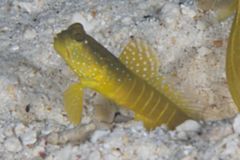Project 4570: C. Gierl, J. M. Mirande, M. Dohrmann, P. Keith, W. Humphreys, H. R. Esmaeili, J. Vukić, R. Šanda, B. Reichenbacher. 2022. An integrative phylogenetic approach for inferring relationships of fossil gobioids (Teleostei: Gobiiformes). PLOS ONE. 17 (7):e0271121.
Abstract
The suborder Gobioidei is among the most diverse groups of vertebrates, comprising about 2310 species. In the fossil record gobioids date back to the early Eocene (c. 50 m.y. ago), and a considerable increase in numbers of described species is evident since the middle Miocene (c. 16 m.y. ago). About 40 skeleton-based gobioid species and > 100 otolith-based species have been described until to date. However, assignment of a fossil gobioid species to specific families has often remained tentative, even if well preserved complete specimens are available. The reasons are that synapomorphies that can be recognized in a fossil skeleton are rare (or absent) and that no phylogenetic framework applicable to gobioid fossils exists. Here we aim to overcome this problem by developing a phylogenetic total evidence framework that is suitable to place a fossil skeleton-based gobioid at family level. Using both literature and newly collected data we assembled a morphological character matrix (48 characters) for 29 extant species, representing all extant gobioid families, and ten fossil gobioid species, and we compiled a multi-gene concatenated alignment (supermatrix; 6271 bp) of published molecular sequence data for the extant species. Bayesian and Maximum Parsimony analyses revealed that our selection of extant species was sufficient to achieve a molecular ‘backbone’ that fully conforms to previous molecular work. Our data revealed that inclusion of all fossil species simultaneously produced very poorly resolved trees, even for some extant taxa. In contrast, addition of a single fossil species to the total evidence data set of the extant species provided new insight in its possible placement at family level, especially in a Bayesian framework. Five out of the ten fossil species were recovered in the same family as had been suggested in previous works based on comparative morphology. The remaining five fossil species had hitherto been left as family incertae sedis. Now, based on our phylogenetic framework, new and mostly well supported hypotheses to which clades they could belong can be presented. We conclude that the total evidence framework presented here will be beneficial for all future work dealing with the phylogenetic placement of a fossil skeleton-based gobioid and thus will help to improve our understanding of the evolutionary history of these fascinating fishes. Moreover, our data highlight that increased sampling of fossil taxa in a total-evidence context is not universally beneficial, as might be expected, but strongly depends on the study group and peculiarities of the morphological data.Read the article »
Article DOI: 10.1371/journal.pone.0271121
Project DOI: 10.7934/P4570, http://dx.doi.org/10.7934/P4570
| This project contains |
|---|
Download Project SDD File |
Currently Viewing:
MorphoBank Project 4570
MorphoBank Project 4570
- Creation Date:
21 February 2023 - Publication Date:
21 February 2023
Authors' Institutions ![]()
- Muséum national d'Histoire naturelle, Paris (Natural History Museum, Paris)
- Centre National de la Recherche Scientifique (CNRS)
- Charles University in Prague
- Ludwig-Maximilians-Universitaet Muenchen
- Shiraz University
- University of Western Australia
- Western Australian Museum
- National Museum in Prague
- GeoBio-Center
Members
| member name | taxa |
specimens |
media |
| MorphoBank Curator Project Administrator | 1 | 1 | 1 |

